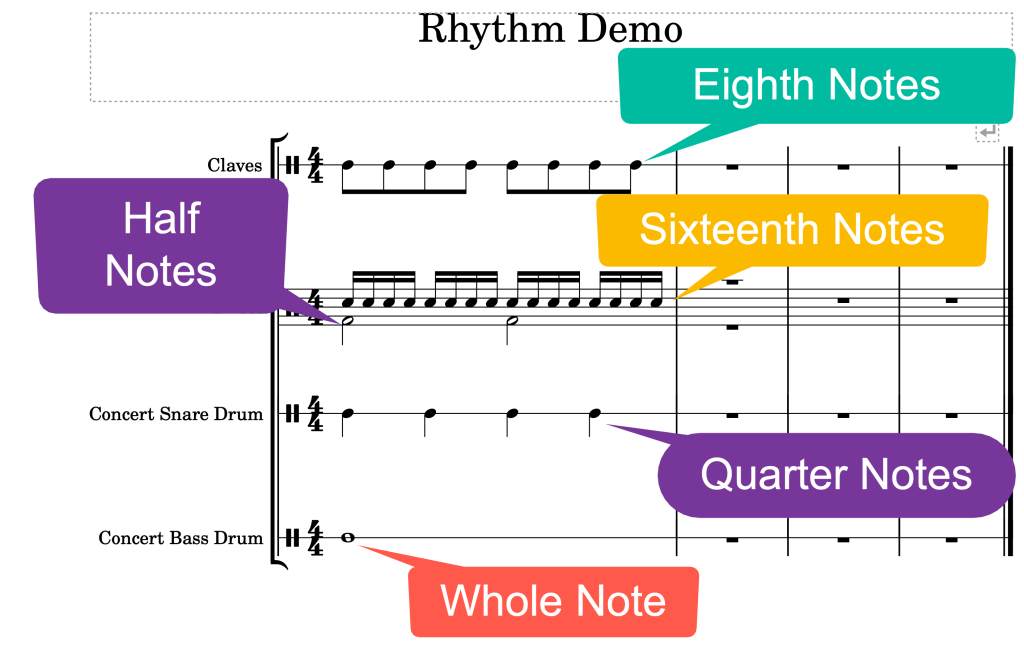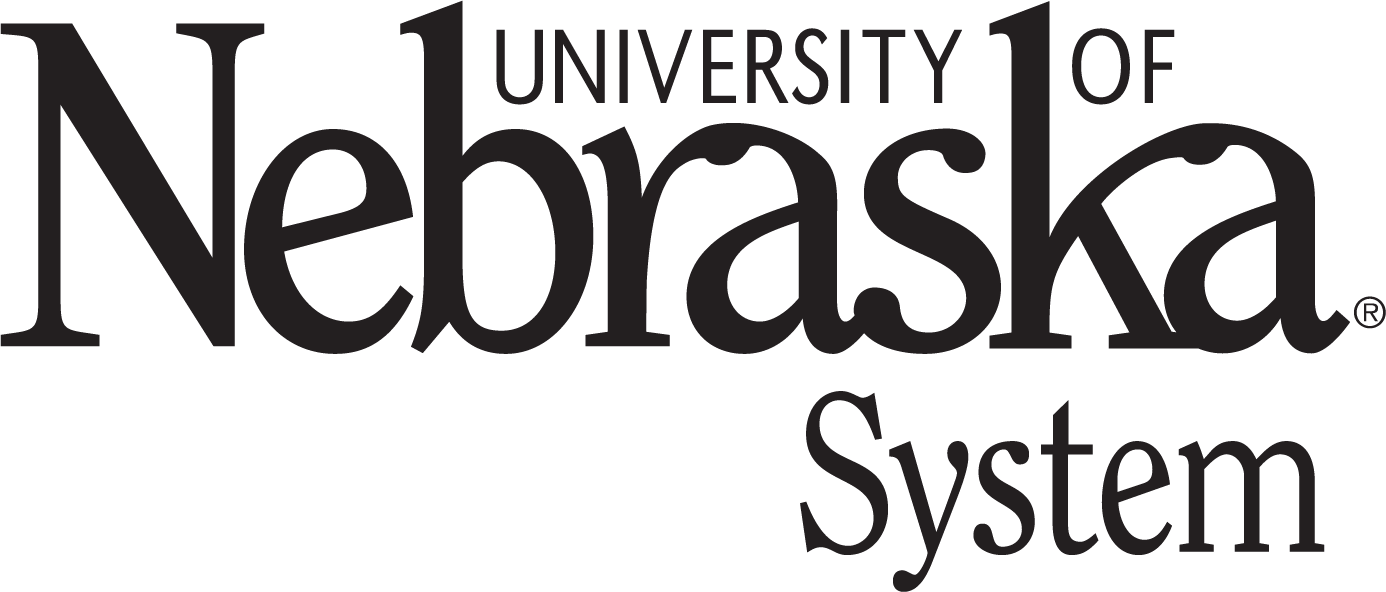Project 1: Rhythm – Music Notation via DrumKit
Project Table of Contents
Project 1: Overview – Create a Beat (Simple)
Our first project will be to create an interesting beat using a drum kit from MuseScore thru the balancing of sound and silence (notes and rests) as a way of working with standard music notation for rhythm.
Summary: Write a drum beat using standard music notation
Features of this drum beat
- Start a new score that uses a drum kit from MuseScore
- Edit the drum kit to sounds (instruments) of your choice – start with a single instrument (good choice is woodblock as MuseScore has a high and low version)
- Use quarter notes/rests
- Minimum of 4 measures
Project 1: Overview – Create a Beat (Intermediate)
Summary: Write a drum beat using standard music notation
Features of this drum beat
- Start a new score that uses a drum kit from MuseScore
- Edit the drum kit to sounds (instruments) of your choice – 2 to 3 instruments
- Use quarter notes/rests and eighth notes/rests
- Minimum of 4 measures
Project 1: Overview – Create a Beat (Advanced)
Summary: Write a drum beat using standard music notation
Features of this drum beat
- Start a new score that uses a drum kit from MuseScore
- Edit the drum kit to sounds (instruments) of your choice – 4 or more instruments
- Use quarter notes/rests, eighth notes/rests, sixteenth notes/rests and any other rhythms you’d like
- Minimum of 4 measures
How To… Project 1
Percussion and drum parts are often notated on a single line staff. One reason for this is that drum sets are considered to be non-pitched instruments so there often is no need to worry about any kind of melody notation.
Here are some examples of pitched and non-pitched percussion instruments:
| Pitched | Non-Pitched |
| Bells | Ride Cymbal |
| Marimba | Bass Drum |
| Vibraphone | Snare Drum |
| Timpani | Hi-Hat Cymbals |
Additional Information for Drum Sounds
Drum Kits
Drum kits are combination of individual non-pitched percussion instruments that are meant to work together for various styles of music.
For example, the ‘Live Rock Kit’ used in GarageBand includes…
MuseScore Drum Kits
The MuseScore app has various percussion settings.
There are a number of approaches for writing original drum parts via notation…
- All of the various drum sounds on a single part (staff) – This can work if you use a MIDI keyboard as each note refers to a unique sound, based on the drum set you’ve chosen.
- Each drum part on its own part (staff) – this make editing much easier and allows you to do things like having different volumes or panning settings for each drum sound.
- A combination where some sounds (like open and closed high-hat) would be on a single staff (approach #1) with snare and bass each on their own staff (approach #2) – this would involve three staffs…
Reading Rhythms
You are well versed in rhythm and drum beats from all of the listening (and perhaps even recording and composing) you have done but probably are out of practice in knowing how to read rhythms in standard music notation.

This is the toolbar from MuseScore and the red letters are keystrokes that select the desired symbol:
2 Thirty-Second Note
3 Sixteenth Note
4 Eighth Note
5 Quarter Note
6 Half Note
7 Whole Note
0 Insert a rest instead of a note (turned off by N)
MuseScore (and all notation software) will apply spacing that automatically aligns rhythms. For example, a ‘whole note’ is a long as 4 quarter notes and one ‘half note’ is as long as 4 eighth notes.
To demonstrate all of this, here’s a short video of percussion parts in MuseScore and using the toolbar to insert various rhythms. Note the vertical alignment that is automatically applied:
Summary of the various Rhythm values:

Note about Notating Rhythms
A whole note always will appear the same (no variations are ever used)
Half Notes and Quarter Notes can be written with the stem pointing down OR pointing up (The quarter and half notes in the Rhythm Demo had all stems down)
Eighth and Sixteenth Notes have stems but also flags which are drawn either as horizontal and connected (also referred to as “beams”) or as individual flags. Rests always appear the same. Beamed notes are the default.

Practice Sessions for Chapter 1
Percussion Resources
A complete listing of percussion and drum instruments can be easily found by looking at all of the General MIDI instruments lists. https://www.midi.org/specifications-old/item/gm-level-1-sound-set
Here are the percussion ‘sub-sets’…
Chromatic Percussion
- 9 Celesta
- 10 Glockenspiel
- 11 Music Box
- 12 Vibraphone
- 13 Marimba
- 14 Xylophone
- 15 Tubular Bells
- 16 Dulcimer
Percussive
- 113 Tinkle Bell
- 114 Agogô
- 115 Steel Drums
- 116 Woodblock
- 117 Taiko Drum
- 118 Melodic Tom
- 119 Synth Drum
- 120 Reverse Cymbal
GM Standard Drum Map
In GM standard MIDI files, channel 10 is reserved for percussion instruments only. Each distinct note number specifies a unique percussive instrument, rather than the sound’s pitch.
36 Electric Bass Drum
37 Side Stick
38 Acoustic Snare
39 Hand Clap
40 Electric Snare
41 Low Floor Tom
42 Closed Hi-hat
43 High Floor Tom
44 Pedal Hi-hat
45 Low Tom
46 Open Hi-hat
47 Low-Mid Tom
48 Hi-Mid Tom
49 Crash Cymbal 1
50 High Tom
51 Ride Cymbal 1
52 Chinese Cymbal
53 Ride Bell
54 Tambourine
55 Splash Cymbal
56 Cowbell
57 Crash Cymbal 2
58 Vibraslap
59 Ride Cymbal 2
60 High Bongo
61 Low Bongo
62 Mute High Conga
63 Open High Conga
64 Low Conga
65 High Timbale
66 Low Timbale
67 High Agogô
68 Low Agogô
69 Cabasa
70 Maracas
71 Short Whistle
72 Long Whistle
73 Short Guiro
74 Long Guiro
75 Claves
76 High Woodblock
77 Low Woodblock
78 Mute Cuica
79 Open Cuica
80 Mute Triangle
81 Open Triangle
Symbol: Music content separated by a single vertical line (bar line)
Sound: heard as a unit of 2, 3 or 4 (typical) beats of music
Horizontal lines on which pitch and rhythmic notation is written. The standard staff consists of 5 lines.
the vertical line that starts from a note head and can be drawn either up or down

